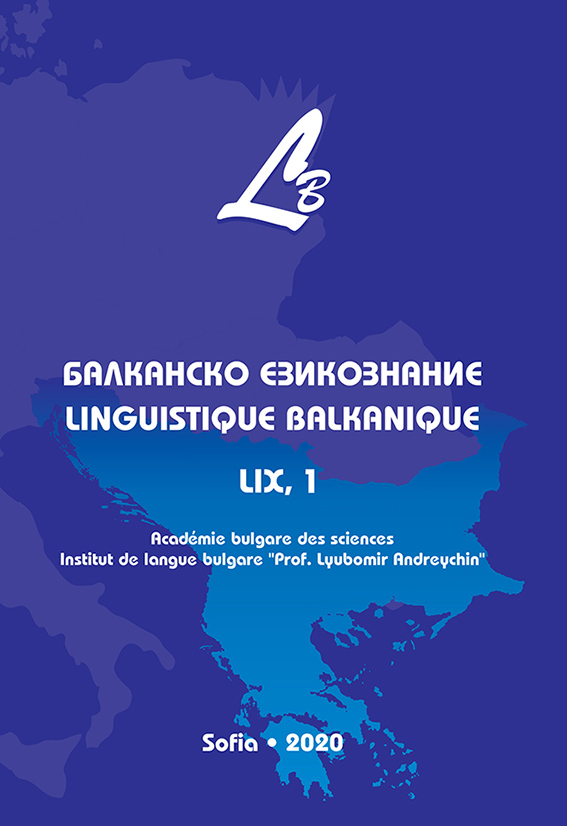
We kindly inform you that, as long as the subject affiliation of our 300.000+ articles is in progress, you might get unsufficient or no results on your third level or second level search. In this case, please broaden your search criteria.

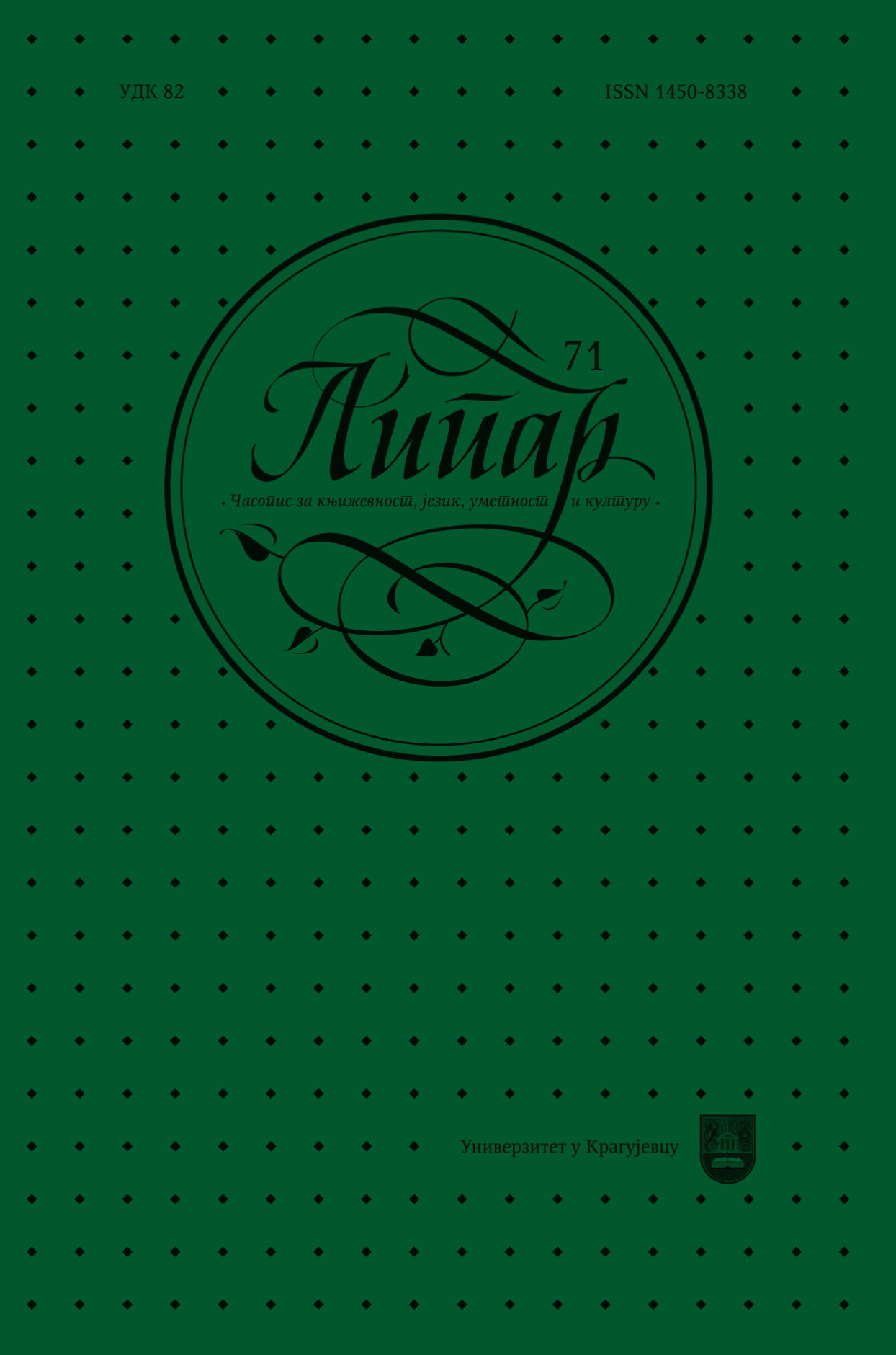
Considerando que la enseñanza moderna de lenguas extranjeras presupone que la lengua y la cultura forman una unidad única e inseparable, es necesario que los alumnos desarrollen una opinión positiva hacia la cultura cuya lengua aprenden. No obstante, son numerosas las investigaciones que confirman la existencia de varios estereotipos a la hora de aprender lenguas extranjeras, y que los mismos de cierta manera moldean el proceso de aprendizaje de la lengua misma. Teniendo en cuenta que los mencionados estereotipos pueden aparecer en dos formas, como positivos y como negativos, su influencia en el aprendizaje de las lenguas extranjeres puede tener un doble efecto. A este respecto, es importante la relación que existe entre los estereotipos y la motivación, porque partimos de la hipótesis de que los estereotipos positivos pueden motivar el proceso de aprendizaje de la lengua extranjera, mientras que, por otra parte, los estereotipos negativos pueden ser un motivo de desinterés para los alumnos, y por lo tanto para su éxito. Asimismo, no hay que descuidar la competencia intercultural cuyo desarrollo depende en gran medida del grado de la existencia de los estereotipos entre los alumnos y los estudiantes. Este trabajo tratará la influencia de los estereotipos en el aprendizaje de la lengua española. El objetivo principal es señalar la importancia del estudio de la dicha problemática a través de la revisión de algunos trabajos e investigaciones más relevantes, es decir comprobar en qué medida los estereotipos influyen en el aprendizaje de la lengua española, al igual que señalar las implicaciones pedagógicas que ellos traen consigo. Las investi- gaciones muestran resultados similares en cuanto a la presencia de los estereotipos entre los estudiantes y los alumnos que aprenden español como lengua extranjera. Aparecen tanto los negativos como los positivos, aunque los segundos emergen en mayor medida, lo que está a favor del aprendizaje de la lengua española, así como a favor del crecimento de motivación y desarrollo de la competencia intercultural.
More...
Inclusion of others’ words into authorial discourse is actually the trans- mission of someone else’s speech. Forms of the journalistic style of writing are used in order for transmission of other people’s speech to have the same expressive value as to readers of newspaper media. In the introductory part we present the impor- tance and role of journalistic style of writing in transferring someone else’s speech into newspapers. The paper also discusses two grammaticalized types of conveying another’s speech - direct and indirect - from daily newspapers published in the Re- public of Serbia. We will pay attention to the examples taken from the texts that are an integral part of the daily newspapers which we have divided into two large groups, depending on whether they belong to the model of direct or indirect speech and what their fuction is in a given context.
More...

Review of: Lidija Milković - Neda Pintarić, Ivana Čagalj i Ivana Vidović Bolt. (ur.), Komparativnoslavističke lingvokulturalne teme. Srednja Europa, Zagreb, 2019., 409 str.
More...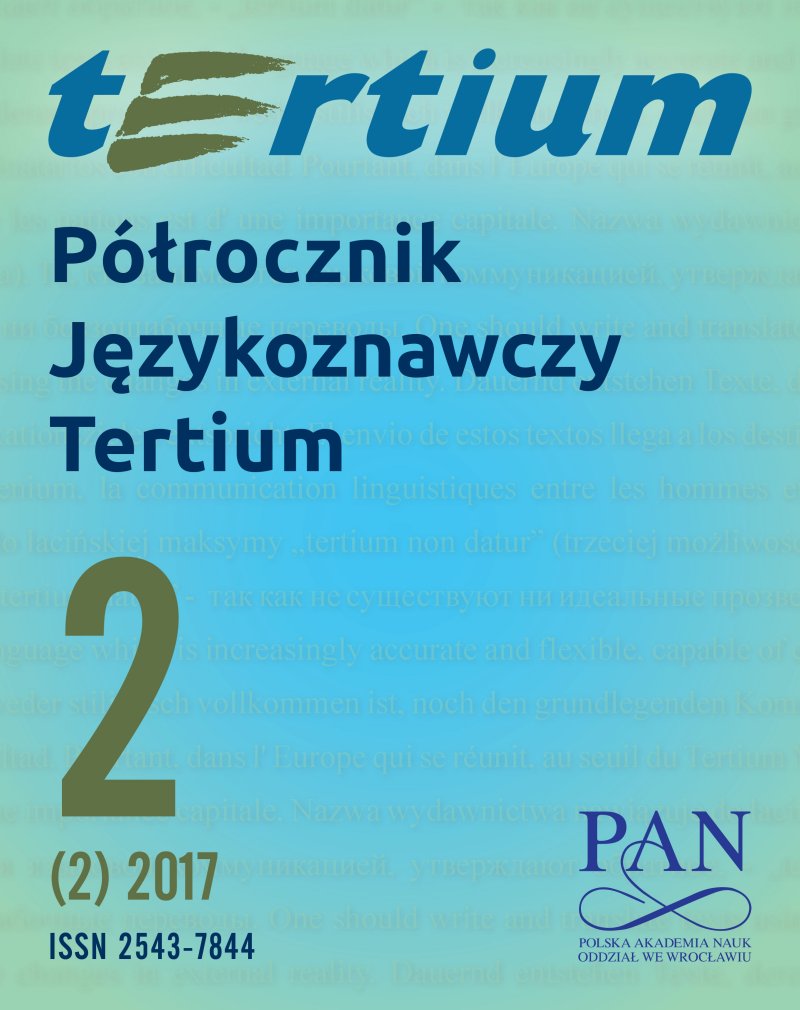
W artykule tym jest analizowane znaczenie kontekstowe czterech przysłówków trochę, nieco, mało, niezbyt oraz ich francuskich odpowiedników un peu, un (tout) petit peu, peu, pas trop we współczesnym języku prasy i polityki. Według podstawowych definicji słownikowych służą one do wyrażania słabego natężenia cechy. Dziennikarze nie chcąc kogoś urazić, a politycy chcąc lepiej wypaść, mówiąc o sobie samych, używają ich, aby w sposób eufemistyczny powiedzieć o negatywnej cesze (trochę, nieco / un peu) albo aby prawie zanegować istnienie cechy pozytywnej (mało, niezbyt / peu, pas trop). Często jednak mówiąc mniej, dziennikarze czy politycy dają odczuć, że powiedzieli więcej. Litota – którą siłą rzeczy można dokładnie odczytać tylko w kontekście użycia, jest zawoalowanym sposobem skrytykowania kogoś lub czegoś, wytknięcia poważnego niedociągnięcia. Używa się jej dla wyrażenia silnego stopnia natężenia lub nawet nadmiaru cechy negatywnej. // In this article we analyze the context meaning of four adverbs: trochę, nieco, mało, niezbyt and their French equivalents un peu, un (tout) petit peu, peu, pas trop in contemporary press and political language. According to basic dictionary definitions, they are used to express weak intensity of a feature. The journalists, trying to avoid offending somebody, and politicians trying to make better impression while talking about themselves, use them, to talk about a negative feature in an euphemistic manner (trochę, nieco / un peu), or to “almost deny” the existence of a positive feature (mało, niezbyt / peu, pas trop). However, while telling less, the journalists or politicians often intend to make an impression that they said more. Litotes, which inevitably can be accurately understood only in the full context of use, is a veiled way to criticize someone or something, to point out a serious shortcoming. It is used to express a strong degree or even an excess of a negative feature.
More...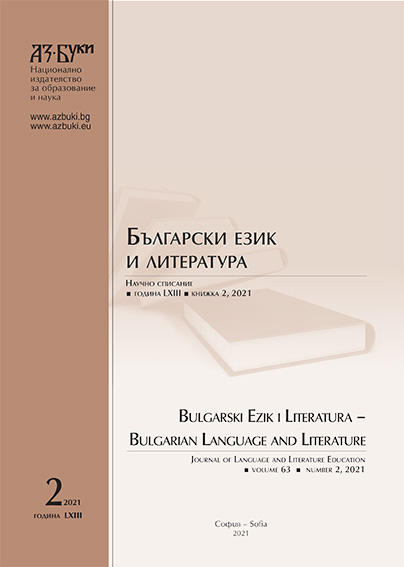
The article considers the most frequent sentence structures of Bulgarian proverbial parallels to Russian proverbs included into G. L. Permyakov’s paremiological minimum. The aim of the study is to classify the syntactic structures of the Bulgarian proverbs in comparison with the structures of the English proverbial parallels. The research has been based on the findings of a paremiological sociolinguistic experiment conducted by Professor M. Yu. Kotova of St. Petersburg State University and her paremiological group that resulted into series of publications titled “Tetradi Paremiographa” (“Handbooks of a Paremiographer”). The relevance of studying sentence structures is due to the fact that the coverage of grammatical issues, i.e. the analysis and description of the logical and syntactic structures of proverbs, is not paid sufficient attention in many languages.
More...
Nonce words or occasionalisms are coined for a particular occasion and usually they are used just once. It is especially difficult when such newly created words have to be translated to another language. This article studies John Harding’s novel Florence & Giles and its Bulgarian translation (by Vladimir Molev). It is a sinister Gothic story told by the 12-year-old Florence living in an isolated New England mansion in 1891. She distorts words by transforming them into other parts of speech, e.g. nouns and adjectives are turned into verbs, nouns into adjectives, adverbs and prepositions into verbs, etc. At first, it could be annoying to the reader, however, once you get used to her narration, it is both fanciful and charming. This research studies the intensely concentrated nonce words in the text and their equivalents in Bulgarian from the point of view of their grammatical, word-formative and semantic characteristics. The contrastive method when applied to the parallel corpus shows some similarities and a lot of differences in the particular characteristics of nonce words due to the specifics of the two languages under discussion.
More...
The article examines the evolvement of the Bulgarian word kurort in historical terms. The first part discusses the practices of using the healing power of nature from ancient times to the present day. Special attention is paid to balneology in Bulgaria as evidenced by numerous settlements named Banya, lit. ‘bath’. Next, an analysis is made of the word kurort and its dissimilarity from the corresponding English and French terms. The emergence of the concept of Kurort in the German language is associated with the general development of medicine from the XIV century onwards, when the medical terminology changed.
More...
The article discusses a number of set phrases incorporated in the text of the Bible. The author focuses on the history of the units: a heart of stone, an eye for an eye, and to hide one’s light under bushel. The different traditions and the primary contexts in which they were initially used are shown and also some of the most significant transformations of their meanings up to the present day were analysed. Although their antiquity supposed only hypothetical findings, the discussed connections with ancient cultures pile specific connotations on their meanings.
More...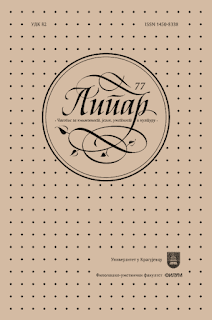
During the process of transcribing the name of the Moscow’s Bolshoi Theater (Большой театр) to Serbian, the Serbian normativistics was tending to gradually turn away from the declension Бољшој теат(а)р, Бољшоја театра (1960) to more or less variant declension Бољшој теат(а)р, Бољшог/Бољшоја театра (1989, 1994, 2010), concluding with the declension Бољшој театар, Бољшог театра (2013) exclusively. On the last transcriptional solution given, the author made remarks that it was discrepant, confusing, impractical, and gram- matically impossible to implement. Thus the author suggested that the Serbian normativistics adopt the following, most practical, solution: as it has come into use that way, Бољшој-театар should be normativized as a semicompound word. In all other and future cases, the Russian toponyms and names beginning with (Не) большой, in the neutre form (Не)большое, should be transcribed as (Не)бољши and (Не)бољше with (joint) genitive case (Не)бољшег, e. g. Russian Большой Город> Serbian Бољши город with genitive case Бољшег города, Russian Небольшой драматический театр > Serbian Небољши драматически театар with genitive case Небољшег драматическог театра, Russian Большое Трифоново > Serbian Бољше Трифоново with genitive case Бољшег Трифоновa. And in the case of Russian toponyms and names beginning with (Не)большая in the feminine gender, their transcription should not be altered anyhow, but stay the way as it is in Serbian normativistics – they should be transcribed as beginning with (Не)бољша(ја) with genitive case (Не)бољше, e. g. Russian Большaя Речка > Serbian Бољша(ја) Речка with genitive case Бољше Речке.
More...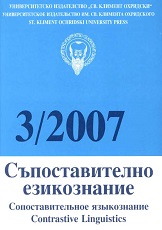
Review of: Р. Кrеjčí. Bulgarian and Czech journalistic phraseology in a mutual comparison. Brno, Masaryk University, 2006. 100 pages.
More...
The last two years saw a dramatic increase in the use of digital classrooms due to the new pandemic realities. Internet platforms and social networks offer teachers many options for interacting with their students and colleagues. Online communication differs from face-to-face communication in many aspects and for linguadidactic purposes should be reconsidered from a sociolinguistic point of view. The aim of the study is to explore sociolinguistic aspects of teachers’ nature in online intercultural communication. The study relies on a questionnaire and interviews to collect data about students’ level of sociolinguistic awareness, their ideas about professional online interaction, and their views on sociolinguistic difficulties. The research provides a comparative analysis of the sociolinguistic competence status in Russian and European methodology. The paper introduces the list of internal and external features that influence interlocutors’ sociolinguistic behavior during intercultural communication online. The results suggest that there are a lot of digital factors that determine the communication outcome. The term “sociolinguistic credo” and its definition are presented. It is admitted that external and internal peculiarities should be taken into account in order to train future foreign language teachers effectively. There should be equality of cultures, especially on the Internet where it is easy to lose all cultures behind avatars.
More...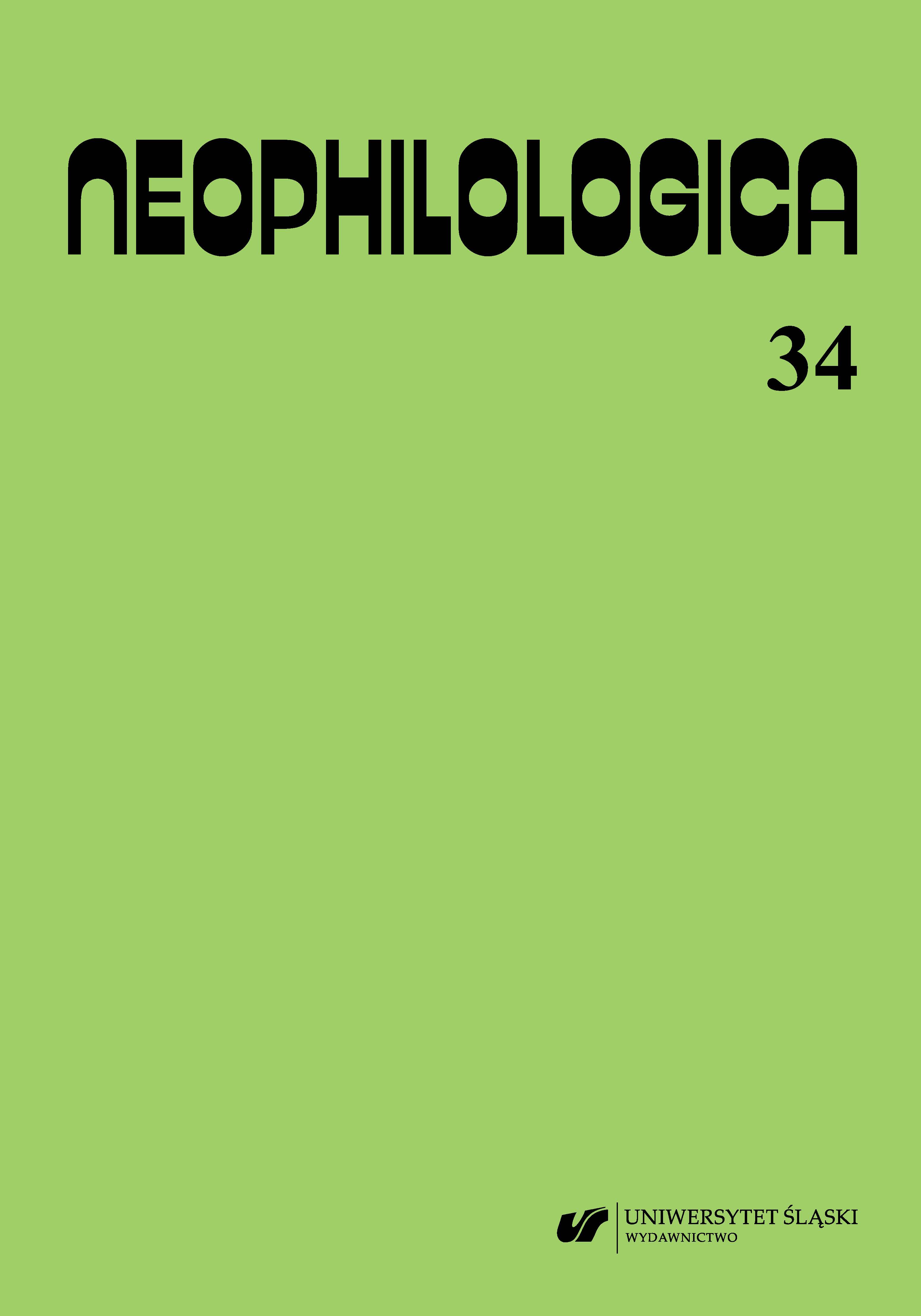
The paper deals with Dontsov’s “phraseological speech” in the framework of cognitive linguistics. The ways of creating partially-authorial (biblical) and authorial (anthropocentric) phraseologisms are discussed and their assignment to different phraseological-semantic microfields is suggested. A number of Dontsov’s phraseologisms are viewed as linguomental pictures of the world that are potentially acceptable for a wider use. Methodologically, the research presents a cluster of general scholarly methods and those used in cognitive linguistics as well as special approaches developed in modern anthropocentric research. Methods of cognitive linguistics are of the utmost importance and include categorizing the phenomena of the objective reality and the interdisciplinary method of interpretation related to the correlation of language data with cultural studies, political science, ethnopsychology and other disciplines. Semantic and contextual analyses are also used as supplementary methods. The potential value of the research is ensured by its contribution to the modern anthropocentric linguistics that aims at studying language through its speaker. Structural-and-logical scheme illustrating the cognitive stages of generating a phraseologism is suggested and the importance of categorization of lingual phenomena is emphasized. Dontsov’s phraseologisms are claimed to be means of exposure of the national Ukrainian lingual picture, symbols of the national worldview, and the prism of the world perception and understanding.
More...
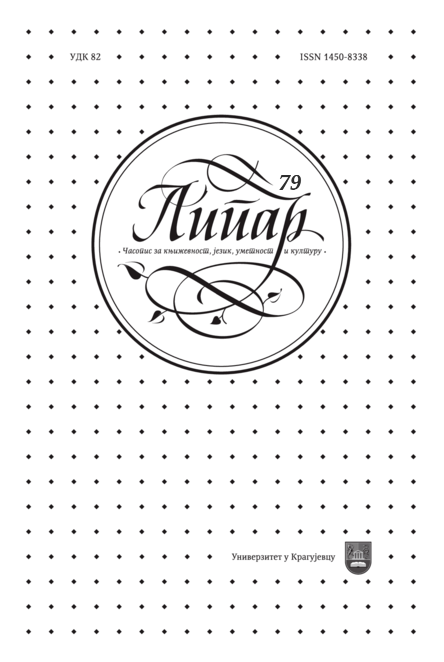
En este trabajo se analiza la presencia y modos de manifestación del paralenguaje en Déjame que te cuente... del escritor y psiquiatra argentino Jorge Bucay. Tres son las razones que nos llevaron a elegir este libro: el título del libro lleva puntos suspensivos que llegan a ser uno de los pilares de la expresividad artística; luego, es una obra llena de diálogos que refleja en papel la estructura típica del discurso oral; y la tercera razón, el autor, además de ser escritor, es un médico psiquiatra y psicoterapeuta, lo que implica una mayor capacidad de matizar la narración con medios no verbales. Bucay utiliza todos los recursos disponibles para diversificar su expresión y hacer reflexionar al lector. Esta intención del narrador se ve ejemplificada a través de muchos elementos paralingüísticos, comunicativamente relevantes. En nuestro análisis partimos de las clasificacones elaboradas por Poyatos (1998, 2002a, 2002б), Antúnez Pérez (2005, 2006) y Panić Cerovski (2017), pero hacemos notar que algunos parámet- ros del análisis deben ser reconsiderados de acuerdo con el canal comunicativo al que pertenecen. Establecida la diferencia entre el tipo visual y el auditivo de los medios de expresividad paralingüística, los resultados del análisis sacan a luz diferentes elementos de tipo visual, entre los cuales destacan los elementos tipográficos y la organización espacial del texto. Los signos de puntuación, interjecciones y vocalizaciones representan las transcripciones de los parámetros auditivos, conque se consideran como elementos paralingüísticos de tipo auditivo. El silencio como ausencia del sonido se manifiesta en la obra tanto al nivel paralingüístico (puntos suspensivos) como al nivel lingüístico (el sustantivo silencio). Se toman en consideración también las descripciones ver- bales que, pese a su realización verbal en la obra, tienen una función primariamente paralingüística gracias a la relación que se establece entre el signo y lo designado.
More...
This paper considers the models of transferring other people’s speech in David Albahari’s novel Leeches from the stylistic point of view. The aim of this paper is recording and illuminating the stylistic effects of different types of transmission of other people’s speech. By using analytical-descriptive methods in the novel, the following are recognized: real indirect speech, introduced free indirect speech, frag- mentary indirect speech, basic (grammaticalized) type of direct speech, semi-indirect speech, indirect expressive speech, and direct non-connector speech. In various contexts they depict the conversations of the novel’s characters.
More...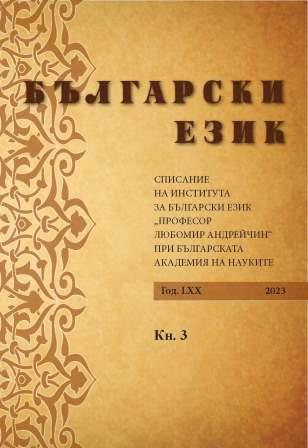
The collection covers a broad range of topics reflecting Prof. Vladko Murdarov’s interests in linguistics and translation. It is divided into two main sections titled Friends and Colleagues. The first one features contributions by people involved in academia or the theatrical community, while the latter includes 38 thematically organised scientific articles and one review.
More...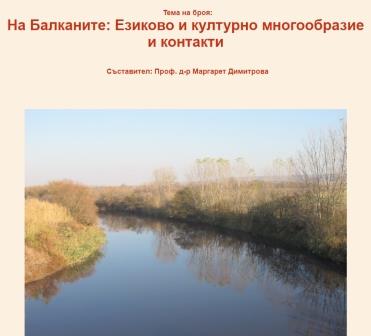
This article discusses future tense particles in a Bulgarian dialect spoken in European Turkey (in the villages around the towns of Uzunköprü and Babaeski). The dialect is spoken by Muslim Bulgarians who left Bulgaria at the end of the 19th century or later. Most of them originate from Middle Northern Bulgaria but some of them have come to this place from Northern Greece and have mixed with the others. There is a variety of future tense particles in the dialect under consideration: ša, sa, za, ža ‘shall, will’. The authors show examples of the use of the above mentioned particles and draw conclusions about their origin in the dialect analyzed.
More...